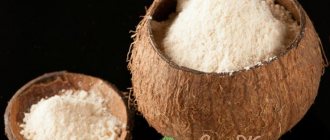Health Benefits
Increasing your consumption of plant-based foods, including rocket salad, reduces the risk of obesity, diabetes and cardiovascular disease. Mustard herb improves overall well-being, eliminates feelings of apathy, and gives strength and energy.
Useful properties of arugula:
- A sulfur-containing compound (sulforaphane) found in mustard grass helps slow down the development of cancer. This substance gives cruciferous vegetables a bitter taste;
the chlorophyll contained in rocket salad blocks the negative effects of carcinogens formed during frying of food;
indau can improve muscle oxygenation, reduce the amount of oxygen required during exercise, and improve athletic performance. This property may improve the health of people with cardiovascular, respiratory or metabolic diseases;
Mustard grass contains three minerals (calcium, magnesium and potassium) that help control blood pressure. It helps lower cholesterol and remove toxins from the body. Eating arugula reduces the risk of heart attack and stroke;
Rocket salad helps prevent osteoporosis. The high vitamin K and calcium content of lettuce helps improve bone health, calcium absorption and reduce calcium leaching;
indau leaves contain an antioxidant - alpha-lipoic acid, which reduces blood glucose levels, increases insulin sensitivity and prevents oxidative stress-induced changes in patients with diabetes;
mustard grass helps reduce damage to liver cells and helps eliminate toxins from the body;
Rocket lettuce has very low oxalate levels compared to other leafy vegetables. Minerals - copper and iron - are more easily absorbed by the body;
indau leaves, like other greens, protect the body from dehydration, helping to avoid fluid loss, and the spicy mustard taste has a natural cooling effect on the body, making this vegetable ideal for menus in hot weather.
Watch a video about the dangers and benefits of arugula salad:
What are the benefits of arugula for the body?
The benefits of arugula for the human body are undeniable. If you regularly eat salad, you can improve your health and tone your body. It contains a lot of flavonoids, which prevent the occurrence of vascular diseases. This product is often recommended for people with high blood pressure and impaired venous blood flow. In addition, scientific research shows the beneficial effects of arugula on nervous processes. The salad should definitely be included in the menu of diabetics and people with genitourinary disorders. Arugula has the following effects on the body:
- antibacterial;
- diuretic;
- disinfectant;
- anti-inflammatory.
As an additional therapy, salad is prescribed for skin diseases and heart problems. In addition, the plant is very useful for diseases of the digestive tract and is completely safe for pregnant and nursing mothers. The benefits of arugula salad are also known to men, as it helps in the treatment of impotence. Regular consumption of salad will help men become more confident in their strength. Representatives of the stronger sex will certainly enjoy the salad with arugula and shrimp.
Salad with arugula and shrimp
Ingredients:
- lettuce leaves – 4-5 pcs.;
- cherry tomatoes – 7-8 pcs.;
- Mozzarella cheese - 100 g;
- balsamic vinegar;
- olive or linseed oil;
- salt pepper;
- boiled shrimp – 2 pcs.
Preparation
- Cut and combine all components.
- Fill with oil.
- Garnish with shrimp.
Arugula for gout
This amazing salad has many indications for various diseases. It is also recommended for those suffering from gout. The arugula plant improves metabolic processes and water-salt balance in the body. For this reason, the medicinal herb will help remove swelling and reduce pain in the joints. Delicious dishes with arugula will not only help in the treatment of illness, but can also become a staple on the menu.
Arugula for cholecystitis
For every disease of the internal organs, it is very important to eat regularly and nutritiously. A special diet also exists for such an insidious disease as cholecystitis. So doctors advise patients to eat food regularly. In this case, there should not be long breaks between doses. It is very important to remember the list of permitted and prohibited products. Sometimes patients ask if arugula is useful for their diagnosis. The doctors' answer is clear - salad is one of the foods prohibited for cholecystitis.
Arugula for pancreatitis
With a disease such as pancreatitis, eating arugula is not prohibited. However, doctors advise caution when eating salad. During periods when the pancreas is inflamed, it is better to choose neutral dishes, and it is better to avoid dishes such as pickled cabbage. The benefits of arugula for the body during illness are undeniable, since it contains many trace elements, including nickel and cobalt. These substances have a positive effect on the pancreas and are very useful in preventing diabetes.
Arugula for the stomach
A healing and beloved plant by many, it has many medicinal properties. Arugula is indispensable for stomach ulcers and gastritis. American doctors have invented an interesting and very effective method of treating stomach diseases, which is based on the use of arugula. This salad not only protects the walls of the stomach, but can also strengthen them. Various studies have been conducted many times on rodents suffering from gastritis and ulcers. For some time they were treated with arugula. To the surprise of specialists, their health began to improve: the production of gastric juice decreased.
Arugula for the liver
Everyone who has heard about this plant at least once in their life is curious about the benefits of arugula salad. The healing properties of arugula are known to many people leading a healthy lifestyle. Doctors often advise patients to use this amazing plant. However, the salad will not be effective for all diseases. Sometimes eating it can be harmful to health. Thus, nutritionists do not recommend adding dishes with arugula to their diet for those suffering from liver disease.
Arugula for cholelithiasis
Arugula is a real helper for many diseases. Those suffering from cholelithiasis often wonder whether they can eat arugula if they have cholelithiasis or not. Not only homeopaths, but also supporters of traditional medicine say that this product can be used for this ailment. In this case, it is better to season the salad not with sunflower or olive oils, which can increase the secretion of bile, but with a mixture of corn (rapeseed) oil, grape or apple cider vinegar and soybean - a tablespoon of each of them
Arugula for diabetes
You can safely use a product such as arugula if you have type 2 diabetes. The green leaves of the medicinal plant contain the antioxidant alpha-lipoic acid, which lowers glucose levels and increases insulin sensitivity. This acid inhibits the development of oxidative stress in diabetics. In addition, lettuce contains chlorophyll, which has a carcinogenic blocking effect on heterocyclic amines.
Storage Features
It is recommended to store arugula, like any other greens, in a paper bag in a specially designated compartment for vegetables. There is another option, which involves placing the greens in containers with cold water for 3-4. This is how cut flowers are stored.
Dried arugula can be stored in hermetically sealed jars.
To add to soups, meat, fish dishes, greens can be dried. To preserve the salad for the winter and not lose its beneficial properties, you can freeze it. Proper processing will preserve the substances as much as possible.
You can store frozen salad properly until the next harvest:
- It is necessary to rinse the greens thoroughly without crushing the leaves.
- Carefully place on paper and dry the leaves well.
- Slice or leave whole.
- Place the arugula in bags for storage, remove the air from them to preserve substances that will benefit the body in winter.
- Place in the freezer and turn on the freeze mode.
Popular types and varieties
Perennial and annual arugula is a popular type of salad all over the world. There are many different varieties of this plant on display in gardening stores.
Let's look at the most popular of them:
“Wonderful” (selection 2010) is a low plant, the stem is erect, slightly drooping down, reaches a length of 18-20 cm. It blooms with small cream-colored flowers. The shape of the leaves is lyre-shaped, the surface is smooth. The variety tolerates cold well, so it is widespread in countries with cool and harsh climates. The plant retains its taste for a long time; it releases the arrow late. Leaves are collected 30-35 days after the first shoots appear. “Cupid's Arrows” (selection 2011) - stem height is from 20 to 30 cm, the foliage is long and thin, with wavy edges. The flowers are light yellow in color. Just like the previous variety, it shoots an arrow late; you can collect leaves for food after 35 days from the appearance of sprouts. “Poker” (cultivated since 2005) is one of the most popular varieties. Valued for its taste, it is perfect for adding to salads and for use as a complete side dish for fish and meat dishes. An early ripening variety, it is recommended to collect the grass on the 20th day from the moment of emergence. The height of the bush is from 40 to 80 cm. “Sicily” (the variety was developed in 2006) - harvesting - on the 20-27th day. Prized for its unique nutty flavor and strong aroma. Plant height is up to 60 cm, tolerates frosts down to -6 degrees, but reacts poorly to heat
It blooms with white flowers decorated with purple veins. “Rococo” (2006) - the variety attracts the attention of culinary experts with its strongly pronounced aroma and pungent taste. Harvesting the plant - 20-25 days after pecking the seeds, bush height - up to 25 cm
The foliage is wide, the edges are slightly jagged. “Corsica” (2006) is a mid-season variety, harvested on the 30th day. The height of the plant is up to 65 cm. There is a big disadvantage - it shoots out the arrow quickly, so you need to have time to harvest.
“Koltivata” (a young variety bred in 2020 in Holland) - the value of taste is in nutty-mustard notes and a strong aroma. Height – up to 25 cm, harvest – 25-27 days from emergence. The foliage is dissected, very juicy. “Spartak” (2012) is an early ripening variety, the leaves are ready to eat after 25 days. The height of the plant is up to 70 cm, the foliage is smooth, reminiscent of sorrel in shape. “Victoria” (2012) is a mid-season variety, harvested on days 28 and 35. Height – up to 70 cm, spicy taste. “Rocket” (2006) - harvested on the 28th day, height can reach 60 cm. Very strong aroma from greens, mustard taste, moderately spicy. “Solitaire” (variety 2007) - ripens on the 25th day, height - up to 20 cm. Winter hardiness is high, you can leave it in open ground until spring, and get early shoots in the spring! “Euphoria” (2007) - height - up to 25 cm, ripening - 30-35 days. The variety perfectly tolerates cold, heat and drought. “Olivetta” (2011) - the variety is ready for harvest in 20-25 days, height – up to 30 cm. Pungent taste and strong aroma. This variety is also called wild arugula, since it was actually found in nature and almost unchanged. A cultivated plant has more advantages: juiciness, winter hardiness, more pronounced aroma and taste.
It is impossible to list all varieties of arugula in one article; there are a lot of them. To this day, new ones continue to appear. Feel free to choose seeds from the prescribed varieties: they are high-yielding, excellent in taste and beneficial properties.
General description of the oil and composition
Arugula oil is obtained from the seeds by cold pressing. Then they can be subjected to a purification process - the refined version contains much less useful substances. Includes:
- vitamins B, C, A, E;
- iodine;
- magnesium;
- iron;
- potassium;
- selenium;
- fluorine;
- zinc;
- copper;
- fatty acid.
The product has a tart, bitter and pungent taste; it is light yellow, thick, and liquefies when heated. In cooking or simply when consumed internally for medicinal purposes, arugula oil can be combined with others:
- olive;
- sunflower;
- nutty;
- corn.
Additionally, watch the program about the plant and its benefits:
Use in cooking
In cooking, arugula leaves are often used in salads with the addition of any other greens and vegetables, and oil is made from the seeds. Arugula goes perfectly with seafood, and the spicy taste of the plant adds sophistication to meat dishes. Arugula is included in many sauces, cold appetizers, pizzas, risotto, and desserts.
It is correct to eat arugula only fresh and with whole leaves; there is no need to cut it with a knife. The leaves should not be limp, as in this case the taste and beneficial qualities are lost.
The herb can be stored in the refrigerator for no more than 2-3 days in a closed container. It can be used for freezing; before doing this, it must be washed and dried from water. When frozen, it retains vitamins and all its beneficial properties for a long time.
5.1
Salad with arugula and chicken breast
To prepare the salad you will need the following ingredients:
- chicken breast - 1 piece;
- tomato - 2 pcs;
- cucumber - 2 pcs;
- arugula - 1 bunch;
- dill - 1 bunch;
- garlic - 1 clove;
- olive oil.
Recipe:
- 1. Cut the chicken breast into long pieces, add salt, sprinkle with seasoning and fry in vegetable oil.
- 2. Add diced tomatoes and cucumbers to the cooled breast pieces.
- 3. Tear the arugula with your hands, chop the dill with a knife and add to the salad.
- 4. Finely chop 1 clove of garlic and add to olive oil.
- 5. Mix all ingredients.
5.2
Salad with arugula and shrimp
The required ingredients are:
- arugula - 100 g;
- cherry tomatoes - 400 g;
- parmesan cheese - 50 g;
- peeled shrimp - 400 g;
- balsamic vinegar - 1 tbsp. l;
- olive oil - 1 tbsp. l.
To prepare the salad you need:
- 1. Fry peeled large shrimp in a small amount of olive oil.
- 2. Add salt and pepper, place shrimp on a napkin to soak off excess oil.
- 3. Cut the Parmesan into thin slices and the tomatoes into halves.
- 4. Mix all salad ingredients.
- 5. Season the salad with salt, pepper and balsamic vinegar. Place everything on a plate and serve.
5.3
Salad with strawberries and arugula
The ingredients are:
- strawberries - 4 pcs;
- arugula - 30 g;
- cheese - 20 g;
- lemon juice - 1 tbsp. l;
- balsamic cream - 1 tbsp. l.
To prepare you will need:
- 1. Wash the strawberries, peel them and dry them.
- 2. Cut large strawberries into halves, and put small ones whole.
- 3. To prepare the salad, you can use soft cheese - mozzarella (cut into cubes), hard cheese - Parmesan (grate).
- 4. Wash the arugula and place on a plate.
- 5. Place randomly strawberries and cheese on a plate with arugula, season the salad with lemon juice and balsamic.
Arugula in cosmetology
Modern cosmetologists know how arugula is beneficial for women. The juice from it can moisturize the skin, relieve peeling and irritation. The oil from the plant is very effective for hair loss. An extract from the green part of the amazing arugula is used to make nourishing creams and other cosmetic products. We invite you to find out in practice the benefits of arugula salad by using effective recipes.
Whitening face mask
Ingredients:
- lettuce leaves – 2 pcs.;
- cucumber juice;
- zucchini pulp - 2 tbsp. l.
Preparation and use
- Chop the arugula.
- Mix the salad with cucumber juice and zucchini pulp.
- Apply the mask to your face for twenty-five minutes.
- Rinse off with cool water.
Moisturizing anti-wrinkle mask
Ingredients:
- arugula juice – 2 tbsp. l.;
- pulp of half a banana;
- pulp of one cucumber.
Preparation and use
- Mix arugula juice with banana and cucumber pulp.
- Apply to cleansed skin for twenty-five minutes.
- Wash off the mask with warm water.
↑ Useful properties and contraindications
Mustard grass is characterized by the carved shape of its leaves, rich green color and original taste with a bitter note. Arugula is rich in vitamins and contains microelements important for the body, including zinc, iron, selenium and magnesium. It also contains tannins and flavonoids.
Regular consumption of arugula has a beneficial effect on health because:
the combination of potassium, magnesium and calcium normalizes blood pressure, helps reduce bad cholesterol in the blood, and reduces the risk of stroke and heart attack; due to the high content of calcium and vitamin K, calcium absorption increases and its leaching from bones decreases, which serves as a prevention of osteoporosis; thanks to sulforaphane, a sulfur-containing compound that gives arugula a bitter taste, the development of malignant tumors is slowed down; oxygen saturation of muscles increases, which improves the well-being of people with diseases of the respiratory system, cardiovascular system, and those with metabolic problems
For healthy people, this effect will improve athletic performance and make it easier to bear the loads of physical exercise; chlorophyll, which is contained in the leaves, is able to block the harmful effects of carcinogenic substances that enter the body with fried foods; due to the low oxolate content compared to other types of salads, when consuming arugula, iron, copper and other trace elements are better absorbed; alpha-lipoic acid, a powerful antioxidant contained in rocket salad, helps reduce blood glucose levels and increase insulin sensitivity, which is important for diabetes and its prevention; the degree of damage to liver cells due to the negative effects of various substances is reduced, toxins are actively removed from the body; dehydration is prevented, which is important in hot weather; vitality increases.. With all the positive qualities of rocket salad, there are also contraindications to including herbs in the daily menu
First of all, this is individual intolerance to the active substances that make up arugula. Allergies can manifest themselves in the form of spasms in the throat, swelling of the mucous membranes, indigestion, cramps in the stomach
Despite all the positive qualities of rocket salad, there are also contraindications to including herbs in the daily menu. First of all, this is individual intolerance to the active substances that make up arugula. Allergies can manifest themselves in the form of spasms in the throat, swelling of the mucous membranes, indigestion, and stomach cramps.
In addition, a large amount of oxalic acid in rocket salad leaves can provoke the formation of kidney stones in people prone to this disease, or aggravate chronic urolithiasis. At the same time, the calcium contained in arugula improves kidney function. Therefore, it is enough to limit the consumption of a healthy spicy plant without eliminating it completely from the menu.
You should also not consume arugula in large quantities if:
- liver diseases;
- biliary dyskinesia;
- colitis;
- gout;
- gastritis, accompanied by high acidity;
- serious dysfunction of the thyroid gland;
- autoimmune diseases.
Arugula contains a large amount of vitamin K, which helps increase blood clotting, so the product is contraindicated for people who, for health reasons, have to take blood thinning medications.
Walnut grass for weight loss
This plant contains a lot of useful substances. Namely: vitamins A, C, K, E, group B, fiber, proteins, flavonoids, a lot of macro- and microelements, carbohydrates, organic acids, essential oils, pectin, phytosterols, fatty acids. And at the same time, 100 g of arugula contains a little more than twenty calories. Just a miracle plant!
Why is arugula good for weight loss? First of all, it reduces appetite, which is very important. In addition, arugula helps speed up metabolism, removes excess water from the body, cleanses the intestines and helps improve digestion processes due to its high fiber content. Arugula also saturates the body with vitamins and minerals, which is important during various diets.
Losing weight with arugula will be most effective if you add it to salads, smoothies, snacks, and cocktails. Greens go well with meat; they help the body digest food faster and avoid heaviness in the stomach.
Add arugula to the dish last. In addition, you should not cut these greens with a knife or put them in a metal bowl. This will spoil the taste and aroma of the spice plant. It’s better to tear it with your hands or just put whole leaves on a dish.
Unfortunately, even such healthy greens have contraindications. It is undesirable to use arugula for gastritis with high acidity, gout, and thyroid diseases. And in case of kidney problems, biliary dyskinesia and autoimmune diseases, the use of grass should be reduced. You can eat arugula, but little by little.
Medicinal properties and contraindications
It contains much more anti-cancer substances than, for example, the popular broccoli.
- The presence of a large amount of vitamins, in particular vitamin C, gives arugula antiviral and anti-infective properties. Strengthens the immune system.
- The vitamin K content protects a person from internal and external bleeding due to wounds or other skin diseases.
- Vitamin A is a strong antioxidant that has a beneficial effect on normal metabolism, the formation of bones, teeth, hair and nails, improves vision, and is necessary for the stable functioning of the immune system.
- Due to the high content of B vitamins in this product, arugula has an effect on the nervous system, improves mental abilities, mood, and increases the tone of the muscles of the digestive tract.
That is, you will benefit from consuming these amazing greens for breakfast in the morning, and you can also benefit from them if you have visited the dentist, or have motion sickness, or are wisely trying to reduce the negative effects of alcohol or tobacco on your body.
- An excellent diuretic that can improve the functioning of the kidneys and urinary tract.
- Iodine plays a major role in the prevention of thyroid diseases.
- The functioning of the gastrointestinal tract improves.
- Helps reduce excess weight.
- Reduces cholesterol.
An increased level of this blood clot formation can lead to stroke, heart attack or other vascular diseases. Eating foods high in lipids in your daily diet will help prevent these diseases.
Increases hemoglobin.
Arugula contains iron in the amount of daily requirement necessary for human health.
- The presence of folic acid will be useful for women planning pregnancy.
- Interestingly, this unusual salad is even credited with aphrodisiac properties, as well as increasing potency in men.
Application in medicine
The ideal combination of vitamins and minerals has allowed this versatile cabbage to take pride of place in various fields.
Benefits for women
The presence of beauty vitamins in arugula makes it very attractive to women. If you eat this salad, you will:
- you will look great;
- take care of your healthy diet;
- easily maintain your weight or strive for the ideal;
- use it to some extent as an aphrodisiac;
- receive compliments as a great housewife because this product will add a piquant taste to your dishes.
For hair
In addition to internal use, the use of arugula oil for hair is extremely beneficial.
It will strengthen the roots, nourish them with useful substances, restore after damage and eliminate dandruff. If you have a problem with hair loss, it is recommended to eat 2 tbsp daily. l. oils, at the same time not forgetting to rub them into the hair roots, leaving the mask on overnight.
When losing weight
Arugula is considered the main friend of a losing weight girl. This is due to its beneficial properties. Due to the presence of certain vitamins and minerals, the human body accelerates the metabolic process, removes harmful waste and toxins and has a diuretic effect. And, of course, we must not forget the low calorie content of this product, which promotes rapid weight loss.
Due to the high fiber content, even a small amount of it gives a person a feeling of fullness.
For diabetes
Regular consumption of rocket salad is beneficial for people suffering from diabetes, as it helps reduce blood sugar levels. Arugula is indispensable for people who suffer from stomach ulcers or gastritis, as it strengthens the stomach walls.
Recommendations for use
Arugula can be eaten either raw or cooked. There are no restrictions on the amount of mustard grass eaten per day .
Before preparing rocket salad, it is necessary to cut off stems that are too thick and remove all yellow and wilted leaves. Place them in a large bowl and rinse in cool water, shaking gently. Dry the washed greens with a towel.
It is recommended not to cut mustard grass with a knife, but to tear it with your hands in order to preserve all the beneficial properties. Use chopped arugula immediately. Rocket salad can be consumed at any time of the day, but when treating diseases and dieting, it is best to take it in the morning on an empty stomach.
Once picked, arugula should be stored in a cup of water or in the refrigerator and used within one to two days.
In cooking
Most often, indau is served as a salad, but it can be added to other dishes, like any greens.
Mustard grass is used in the preparation of:
- salads;
- sandwiches;
- pasta;
- soups;
- meat;
- fish;
- seafood;
- pizza;
- legumes;
- sauces;
- casseroles.
It gives food an amazing aroma and taste. It is often mixed with other herbs to complement the spicy taste of arugula.
Arugula seed oil (gargir) is also used in cooking : it is used to season salads and is used as one of the ingredients for pickling.
Rocket lettuce leaves go well with lemon, olive oil, and Parmesan cheese.
Arugula looks very impressive as a decoration for a dish due to its bright, rich green color.
Now that you know about the beneficial properties of arugula salad, we suggest watching video recipes for preparing dishes of this wonderful product.
Salad with arugula, chicken, orange and feta cheese:
2-minute salad with arugula, cherry tomatoes and mozzarella:
For weight loss
Nutritionists consider rocket salad one of the best foods for weight loss. It contains a small amount of calories, and its high fiber content keeps you feeling full for a long time. In addition, indau has a positive effect on metabolism.
The vitamins and minerals contained in mustard grass help maintain strength, maintaining energy and performance during the diet.
The best effect can be achieved if you consume indau leaves on an empty stomach before breakfast . It is recommended to eat one serving of arugula salad per day. In addition, you can arrange fasting days, including only mustard grass in the menu.
For the treatment of various diseases
Mustard grass oil and leaves are used in the treatment of many diseases. Arugula has a beneficial effect on the gastrointestinal tract. It helps with stomach ulcers and gastritis, protecting and strengthening its walls.
This vegetable is useful for venous disease, high blood pressure , respiratory and urinary tract diseases.
Rocket salad regulates water-salt metabolism, helps strengthen the immune system, and helps the body resist bacteria and viruses.
Arugula oil is used in the treatment of dermatitis, skin inflammation and rashes. It eliminates hematomas, ulcers, calluses and polyps.
Indau has expectorant, lactogenic, diuretic effects.
The best recipes with arugula
Here are some wonderful and delicious recipes using these greens. They cook very quickly, and you can pick up the rest of the ingredients very easily.
Tender salad
Ingredients: avocado, grapefruit, walnuts, rocket salad, olive oil, garlic, pepper.
Preparation:
- We peel the grapefruit, carefully removing the skin from the segments.
- We clean the avocado, cut it into small pieces, and pour it with freshly squeezed grapefruit juice. This will prevent the avocado from turning black.
- Add peeled walnuts.
- Chop the garlic and add it too.
- Carefully wash the top of the arugula and add to our plate.
- Drizzle with oil.
Salad with tomato
Ingredients: maid's herb, cherry tomatoes, olive oil, bell pepper, celery.
Cooking method:
- Wash the tomatoes thoroughly and cut them in half.
- Wash and dry mustard leaves, add tomatoes.
- Finely chop the celery and bell pepper.
- Add salt to taste and drizzle with olive oil.
Tuscan
Ingredients: ground black pepper, beans, lemon, garlic, olive oil, arugula, red onion.
Cooking method:
- Rinse the beans under cold water.
- Wash the onion and chop it very finely.
- Add chopped onion and caterpillar to the beans.
- Squeeze the juice from the lemon and pour it over the salad.
- Drizzle with olive oil.
Summer salad with vegetables
Ingredients: tomato, cucumber, Chinese cabbage, spinach, rocket salad, olive oil, mustard, daikon.
Cooking method:
- Wash all ingredients thoroughly.
- Slice the tomato and cucumber. Place them in a bowl.
- Clean the daikon.
- Grate daikon and Chinese cabbage on a coarse grater. Add them to the bowl.
- Tear spinach and mustard grass into small pieces. Sprinkle the composition with them.
- Drizzle with olive oil.
- Add a little mustard to taste and mix thoroughly.
Salad with zucchini
Ingredients: arugula, sweet onions, zucchini, fresh cucumbers, olive oil.
Cooking method:
- Wash the caterpillar leaves thoroughly, chop the greens and place in a bowl.
- Add onion, cut into half rings, to the leaves and add to the salad.
- Peel the zucchini and cut it into strips.
- Chop the cucumbers and add them along with the zucchini to the salad.
- For the sauce you will need: mix olive oil.
- Season the salad with sauce and serve.
Dietary
Ingredients: Chinese cabbage, spinach, arugula, cucumber, onion, pepper, olive oil.
Cooking method:
- Wash the vegetables thoroughly.
- Chop Chinese cabbage, cucumber and spinach.
- Add onion and stir.
- Sprinkle arugula on top and add pepper to taste.
- Drizzle with olive oil.
Harm of arugula
Despite the large number of beneficial properties, greens have their contraindications. These include:
- Individual intolerance.
- Urolithiasis disease.
Arugula is a versatile vegetable that can be added to both vegetable and fruit salads. Also, maid grass can be used as the basis of a salad or simply to decorate a dish.
In any case, it will not only delight you with its taste, but also saturate your body with healthy vitamins!
That's all. I will tell you more about mustard grass in the following articles. Eat fresh greens and fill yourself with summer mood and vitamins. See you in the next article.
Types of arugula
Imagine, this useful plant used to be considered a weed and they got rid of it by weeding. And the delicious grass remained lying in a bucket with wormwood and thistle...
But now everything is different, it is specially grown for culinary needs. Shouldn't we do this too?
The most prolific and fastest-growing type (variety) of arugula is “Poker”. The first shoots appear after 5 days. The plant matures completely in a couple of months. This arugula grows branched and tall.
Other varieties are not as tested as Poker, but are also worthy representatives of their species: Mermaid, Sicily, Dikovinka, Gourmand. Didn't find popular Poker? No problem, you can buy any other one.
It should be remembered that the most delicious and juicy will be (who would doubt it) the first young sprouts.
The herb belongs to the cruciferous family, which makes it similar to cabbage, radish, horseradish, but in taste it resembles a kind of “nutty” parsley, has a slight mustard tang, and a spicy aroma. By the way, parsley itself is extremely useful.
Do you understand, right? By planting arugula on your windowsill at home, you will not only get a delicious seasoning for your dishes, but also a pretty flower! In my opinion, the advantages are obvious. And if you consider that it also helps your health...
Application
As a rule, fresh arugula is added to salads made from fresh vegetables, cheese, and seafood with olive oil dressing. In Italy they eat pasta topped with arugula and goat cheese. Arugula greens are also added to soups, stews, and vegetable juices are prepared.
Market Analytics
- COVID-19 is changing the rules of the game in the cosmetics market
- Beauty of the future: cosmetic innovations 2020
- New ingredients are the driving force of the cosmetics industry
Convenient search for beauty salons on our website
Beauty salons in Moscow Beauty salons in St. Petersburg Beauty salons in Ekaterinburg Beauty salons in Novosibirsk
Latest blog posts on our website
- Naturecream / Geranium (Pelargonium) oil for skin health and beauty
- Prostye-sovety / Save on a beauty salon: procedures that can be done at home
- Naturecream / Growth Factor - brings back youth?
- Oksana-Lezina / 3 effective abdominal exercises from a fitness instructor for beginners
- Prostye-sovety / Making perfect curls at home
- Prostye-sovety / Which hair removal method to choose
- Naturecream / Wrinkles Puppets
- Naturecream / PEPHA-TIGHT - instant skin lifting
- Naturecream / Blue light - a danger to the skin
- Naturecream / Cocoa Butter – A treat for the skin
Latest forum topics on our website
- Mrs._Smith / Badly sunburned! What to do?((
- Ice / Is it necessary to combine fitness classes with a diet?
- Antonova / What can be used for hair loss?
- Radio operatorKat / Who was on a protein diet?
- Suzanna / Mesotherapy on the face
Other articles in this section
| Green peas From a botanical point of view, green peas are not a vegetable, but a fruit, since after flowering they form seeds. Vegetable plants do not have seeds. The pod contains from two to ten round seeds. This unpretentious plant of the legume family has been used in cooking for several thousand years. It is believed that its homeland is in Central Asia and the Middle East. |
| Savoy cabbage Savoy cabbage is more similar to white cabbage, only the leaves of white cabbage have a smooth surface, while Savoy cabbage has a corrugated surface. Savoy cabbage has a more delicate taste and aroma; the leaves do not have thick, coarse veins, like white cabbage. Like other cruciferous vegetables, it contains many nutrients, especially glucosinolates. The name of this type of cabbage comes from the Italian county of Savoy, where it was first grown. |
| Romanesco cabbage Romanesco is the most unusual member of the cruciferous family. This variety is closest to broccoli and cauliflower. Its inflorescences are organized in a strict sequence, reminiscent of the classical Fibonacci series in mathematics. The inflorescences form a spiral, and each spiral consists of a group of similar small spirals. This fractal pattern repeats itself many times as the inflorescences become smaller. Romanesco cabbage was first mentioned in Italian sources of the 16th century. It was developed on the northwestern coast of the Mediterranean from wild kale. |
| Kale Cabbage Kale cabbage also belongs to the cruciferous family, but unlike other types of cabbage, it does not form heads. Its curly green leaves are more reminiscent of salad greens. In some varieties, the leaves are not curly, but smooth, and the color varies from green to purple. The ancestor of kale is considered to be wild kale, but the exact place of origin has not been established. |
| Split peas Split or split peas are a type of dried pea. Dried peas have been one of the staple human foods since ancient times. Peas have been found during archaeological excavations in Egypt, Asia and Rome. After harvesting, the peas are divided in half and then dried to form split peas. |
| Dill Dill is an annual or perennial herbaceous plant native to southern Russia, western Africa and the Mediterranean region. For thousands of years, dill has been used in cooking and medicine. So, it is mentioned in ancient Egyptian scrolls and in the Bible. In ancient Greece and Rome, dill was considered a symbol of wealth, and warriors applied dill seed powder to wounds to promote healing. |
| Sweet corn on the cob The homeland of corn or maize is Mexico and Central America. Although this crop is classified as a vegetable, it is actually a grain crop. On the tall stems of the plant there are ears with grains. The most common types are white and yellow corn, but red, brown, blue and even purple varieties are also found. Yellow or sweet corn has a sweet taste. |
| Dried Milk Thistle Milk thistle, also known as milk thistle, has been used for over two thousand years as an herbal remedy for liver, kidney and gallbladder diseases. The herb has a very bitter taste. This annual plant belongs to the Asteraceae family. Milk thistle leaves are edged with thorns, purple flowers are collected in a basket. The most valuable part of the plant is the seeds. Milk thistle is native to the Mediterranean region. |
| Oakleaf lettuce The Oakleaf lettuce variety (oak lettuce) was developed in France in the 17th century. Its leaves are very similar in shape to oak leaves, which is why the salad got its name. The leaves form a loose rosette. There are two varieties of oakleaf lettuce - green and red. The closest variety to it is butter lettuce. |
| Nettle Nettle is known throughout the world for its “stinging” leaves. The leaves and stem of nettle are covered with hairs, the chemical in which causes irritation when in contact with bare skin. |
Arugula - what do you eat it with?
Returning to the gastronomic value of this leafy vegetable, it is worth mentioning its versatility.
It is a strong ingredient in all cold salads.
The first and probably the most popular salad with caterpillars in our country is “Rucola with shrimp” or “Rucola with seafood”.
This Mediterranean dish appeared in Russian restaurants around the early 2000s. The spice goes well with tomatoes and cheese, sea fish and seafood.
There is an opinion that arugula does not tolerate heat treatment. However, this is not quite true. It can be blanched, but only for 1-2 minutes (like spinach), as it loses most of its beneficial properties and changes its taste.
Therefore, arugula is used in soups and vegetable stews, in pizza and risotto, in sauces and hot meat dishes, but is added at the very end. A very tasty filling for pies is made from a mixture of caterpillar and homemade cheese.
Arugula is often added to salads that contain citrus fruits - oranges, for example. And such a dish is always seasoned with lemon juice; it best highlights the specificity of the greens.
It is not recommended to season dishes with caterpillars with mayonnaise - the sophistication and elegance of taste is lost
It is also worth mentioning that no one cuts arugula with a knife (like other types of leaf salads), they simply put it whole or tear it with their fingers into the desired pieces, the main thing is that it is not small.
Also, this product is not served with river fish.
And further. An inexplicable fact is the price of arugula in supermarkets. It is overpriced to absurd levels. Growing this plant, as already mentioned, is not at all difficult.
Seeds are very cheap. Sow them in a pot with a nutrient mixture and in a few weeks you will enjoy healthy and original greens. Arugula tolerates shade, heat and cold very well.
What foods does arugula go with?
The versatility of arugula is simply amazing. It is used to decorate and complement salads made from any product and sandwiches. It enriches and adds its own flavor to meat, fish, vegetable dishes, stewed vegetables, and soups. Arugula is added to sauces, pastas, pizza, cheese, cottage cheese, and egg dishes. The use of arugula with tomatoes, seafood, salted red fish, and cheese is considered one of the most successful in cooking. Lettuce leaves add originality to products such as fresh cucumbers, assorted fruits such as oranges, avocados, pomegranates, apples, pears, and table grapes.
Even ordinary beets with the addition of arugula are incredibly tasty and healthy. Liver, chicken, shrimp - for these products, arugula will be an excellent partner in dishes.
It is important to maintain the correct proportions and not overuse this spicy herb, so as not to spoil the culinary masterpieces. When preparing dishes, it is better to use fresh arugula to preserve all biologically active substances and vitamins. It can also be added to hot dishes, but only at the end of cooking.
Composition of arugula
Any product must have beneficial properties in order to become the main ingredient of the menu. What are the benefits of arugula? In addition to its pleasant tart taste, arugula boasts a huge list of beneficial substances.
Arugula is a special type of salad green that has recently become increasingly popular.
And this is due to the fact that people are thinking more and more about proper and healthy nutrition.
And our rocket salad fully meets all these requirements. After all, along with its nutty, tart taste, arugula is a storehouse of beneficial properties.
Arugula is an annual herbaceous plant that belongs to the Brassica family. It is most used in preparing Italian dishes. Arugula has many worthy relatives among cabbage - this includes ordinary white cabbage, cauliflower, and overseas broccoli.
The height of this cabbage reaches 60 cm, the leaves are lyre-pinnate in shape with yellow or white flowers.
The popularity of the herb today is due to the fashion for Mediterranean cuisine and the fact that its composition is finally appreciated.
100 grams of this plant contains a whole storehouse of vitamins, microelements and macroelements.
But most of all, it is beneficial due to the presence of such elements:
- Proteins - 2.6 g;
- Carbohydrates - 2.0 g;
- Vitamins: C – 15 mg;
- A (retinol, beta-carotene) - 1.4 mg;
- B1 (thiamine) - 0.044 mg, B2 (riboflavin) - 0.086 mg, B5 (pantothenic acid) - 0.44 mg, B6 (pyridoxine) - 0.07 mg. Vitamins of this group play a dominant role in metabolism.
- K (antihemorrhagic vitamin) - 108.6 mcg, which is the daily dose for humans;
- potassium (369 mg), calcium (160 mg), iron (1.46 mg).
In addition, arugula is a low-calorie product, since 100 grams of this product contains only 25 kcal.
In terms of its properties, arugula is similar to other types of greens, but like them it does not contain fat, but is saturated with dietary fiber. It also contains eight times more calcium, four times more iron and five times more vitamins of various categories.
Lettuce is grown in Southern Europe and the Mediterranean.
Compound
The valuable nutritional properties of arugula are explained by its chemical composition. Although the plant has been known since antiquity, it began to be studied only at the end of the 20th century. In Mediterranean countries during the Roman Empire, this herb was considered a powerful aphrodisiac.
Arugula has an extensive chemical composition
Chemical composition:
- vitamins – E, C, A, K, group B
- mineral elements – zinc, sodium, potassium, calcium, selenium, copper, phosphorus, magnesium and iron
- flavonoids
- tannins
- sulforaphane is a plant organic compound with antibacterial and anticancer effects
- glucosinolates - phytonutrients, which are biologically active substances, when entering the body, work as powerful anoxidants
- diindolylmethane – a substance that has an antitumor effect
Arugula owes its pungent, bitter taste to the glucosinolates it contains. These substances are capable of retaining carcinogens that enter the body with food and medications, they reduce the risk of the formation of cancer cells. After gastrointestinal diseases, glucosinolates may not be broken down in the intestines. Therefore, to obtain maximum benefit, it is necessary to restore normal intestinal microflora.
Arugula is low-calorie, it contains 94% water, so you shouldn’t expect a big boost of energy from consuming this herb. It’s another matter if you season pizza or meat salad with it.
Chemical composition
The tables indicate the content of vitamins, macro- and microelements per 100 grams of product.
Vitamins
Macronutrients
The nutritional value
The benefits and harms of arugula (arugula) and its oil in dietetics and for weight loss
gastritis and stomach ulcers
Mustard grass (another name for arugula) is recommended for people during recovery and rehabilitation to provide the weakened body with vital vitamins and mineral salts.
This spicy plant plays a special role in dietetics.
.
The calorie content of arugula is very low - only 25 calories per 100 g of leaves. Such a low energy value allows overweight people to safely include it in their daily diet. In addition, the leaf part of the plant contains a lot of fiber
, which provides a feeling of fullness for a long time and cleanses the intestines of toxins. Regular consumption of arugula allows you to improve digestive processes and improve fat and carbohydrate metabolism.
For those who want to get rid of a few extra pounds, it is enough to take 2 teaspoons
mustard oil. This should be done on an empty stomach. This little trick will help control your appetite throughout the day and compensate for the lack of vitamins in people on diets.
What does arugula go with?
Like any other salad, arugula goes well with almost all food groups. For example:
- with vegetables (cucumbers, radishes, tomatoes, onions, garlic);
- with any type of meat (beef, pork, lamb);
- with herbs (spinach, sorrel, cilantro, parsley);
- with red fish (salmon, trout);
- with dairy products (cottage cheese, cheese);
- with legumes (beans);
- with cereals (rice, barley).
How to choose a good product
The most important sign that the product in front of you is not stale is juicy, brightly colored leaves. The color of fresh greens is very rich, the leaves are even. The presence of crumpled leaves means that the product has been lying on the counter for a long time.
Another criterion when choosing arugula is the size of the leaves. If the salad has large leaves, its taste will be less bitter. In plants with small leaves, on the contrary, the mustard flavor will be very pronounced.
How to eat arugula
There are no specific norms for arugula consumption - you need to focus primarily on your feelings. This herb rarely causes allergic reactions, however, you should not sharply increase the amount of arugula in the menu.
How to select and store
The main condition for choice is the freshness of the greens with a specific, slightly pungent aroma. Avoid buying wilted greens with yellowed leaves. Tender leaves are stored in a plastic bag on the refrigerator shelf, but no more than three days. The leaves should not be wet, they should be dried.
For long-term storage, it can be frozen, pre-washed and dried.
Video
Additional information “Arugula: health benefits and harms.”










